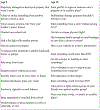Is Housing Hardship Associated with Increased Adolescent Delinquent Behaviors?
- PMID: 32773915
- PMCID: PMC7409722
- DOI: 10.1016/j.childyouth.2020.105116
Is Housing Hardship Associated with Increased Adolescent Delinquent Behaviors?
Abstract
Housing-related hardships, ranging from an inability to pay full housing costs to being evicted, are common experiences for families in the U.S. Despite the frequency of these hardships, little is known about their relationships with adolescent behaviors. The current paper uses longitudinal data on births in large U.S. cities from all six waves of the Fragile Families and Child Well-being Study to explore the association between childhood experiences of housing hardships and delinquent behaviors in adolescence. About 60% of the sample experiences housing hardship at one or more waves. Inabilities to meet housing costs are common among the sample: over 40% are unable to pay their full rent or mortgage payment. Results from multivariate regression and residualized change models indicate that children who experience any housing hardship are more likely to engage in delinquent behaviors than children who do not experience hardship. Exposure to higher average levels of hardship and more waves of hardship are both associated with increased delinquency. Childhood poverty does not moderate the relationship between housing hardship and delinquency suggesting that housing hardship is associated with delinquent behaviors for poor and non-poor children alike. This research builds on existing literature highlighting the importance of examining hardship as a measure of family wellbeing. It also suggests that preventing common housing-related hardships can be beneficial for youth behavioral outcomes.
Keywords: Fragile Families; adolescent behaviors; delinquency; housing; material hardship; poverty.
Conflict of interest statement
The author has no conflicts of interest.
Figures


Similar articles
-
Acute care utilization and housing hardships in American children.Child Youth Serv Rev. 2022 May;136:106447. doi: 10.1016/j.childyouth.2022.106447. Epub 2022 Mar 1. Child Youth Serv Rev. 2022. PMID: 35342214 Free PMC article.
-
Material Hardship and Child Socioemotional Behaviors: Differences by Types of Hardship, Timing, and Duration.Child Youth Serv Rev. 2012 Apr 1;34(4):814-825. doi: 10.1016/j.childyouth.2012.01.008. Child Youth Serv Rev. 2012. PMID: 22408284 Free PMC article.
-
Economic Hardship in Childhood: A Neglected Issue in ACE Studies?Matern Child Health J. 2018 Mar;22(3):308-317. doi: 10.1007/s10995-017-2368-y. Matern Child Health J. 2018. PMID: 28975444
-
Patterns and predictors of material hardship among poor families with children.J Community Psychol. 2023 Jul;51(5):1901-1916. doi: 10.1002/jcop.22978. Epub 2022 Dec 13. J Community Psychol. 2023. PMID: 36511430
-
Material Hardship Among Children, 2022.2023 Oct. National Survey of Children’s Health Data Briefs [Internet]. Rockville (MD): Health Resources and Services Administration; 2018–. 2023 Oct. National Survey of Children’s Health Data Briefs [Internet]. Rockville (MD): Health Resources and Services Administration; 2018–. PMID: 38648323 Free Books & Documents. Review.
Cited by
-
Effect of Regional Housing Hardship on Spatial Variation in Cancer Incidence: Does Housing Stress Increase Cancer Incidence?Geohealth. 2024 Nov 30;8(12):e2024GH001140. doi: 10.1029/2024GH001140. eCollection 2024 Dec. Geohealth. 2024. PMID: 39619267 Free PMC article.
-
Making a way out of no way: The importance of improving financial instability among African American kinship care families.Child Youth Serv Rev. 2024 Mar;158:107409. doi: 10.1016/j.childyouth.2023.107409. Epub 2023 Dec 18. Child Youth Serv Rev. 2024. PMID: 38962749 Free PMC article.
-
Household energy poverty and trajectories of emotional and behavioural difficulties in children and adolescents: findings from two prospective cohort studies.Soc Psychiatry Psychiatr Epidemiol. 2024 Aug;59(8):1299-1309. doi: 10.1007/s00127-024-02616-2. Epub 2024 Feb 12. Soc Psychiatry Psychiatr Epidemiol. 2024. PMID: 38342824 Free PMC article.
-
Acute care utilization and housing hardships in American children.Child Youth Serv Rev. 2022 May;136:106447. doi: 10.1016/j.childyouth.2022.106447. Epub 2022 Mar 1. Child Youth Serv Rev. 2022. PMID: 35342214 Free PMC article.
References
-
- Agnew Robert. 1985. “A Revised Strain Theory of Delinquency.” Social Forces 64 (1): 151–67. 10.1093/sf/64.1.151. - DOI
-
- Agnew Robert. 1992. “Foundation for a General Strain Theory of Crime and Delinquency.” Criminology 30 (1): 47–88. 10.1111/j.1745-9125.1992.tb01093.x. - DOI
-
- Agnew Robert, Shelley Keith Matthews Jacob Bucher, Welcher Adria N., and Keyes Corey. 2008. “Socioeconomic Status, Economic Problems, and Delinquency.” Youth & Society 40 (2): 159–81. 10.1177/0044118×08318119. - DOI
-
- Anderson Ralph. 1996. “Homeless Violence and the Informal Rules of Street Life.” Journal of Social Distress and Homelessness 5 (4): 369–80. 10.1007/BF02092914. - DOI
Grants and funding
LinkOut - more resources
Full Text Sources

